Peacocks are truly mesmerizing creatures, particularly when the males flaunt their magnificent, vibrant tails. The display is nothing less than breathtaking.
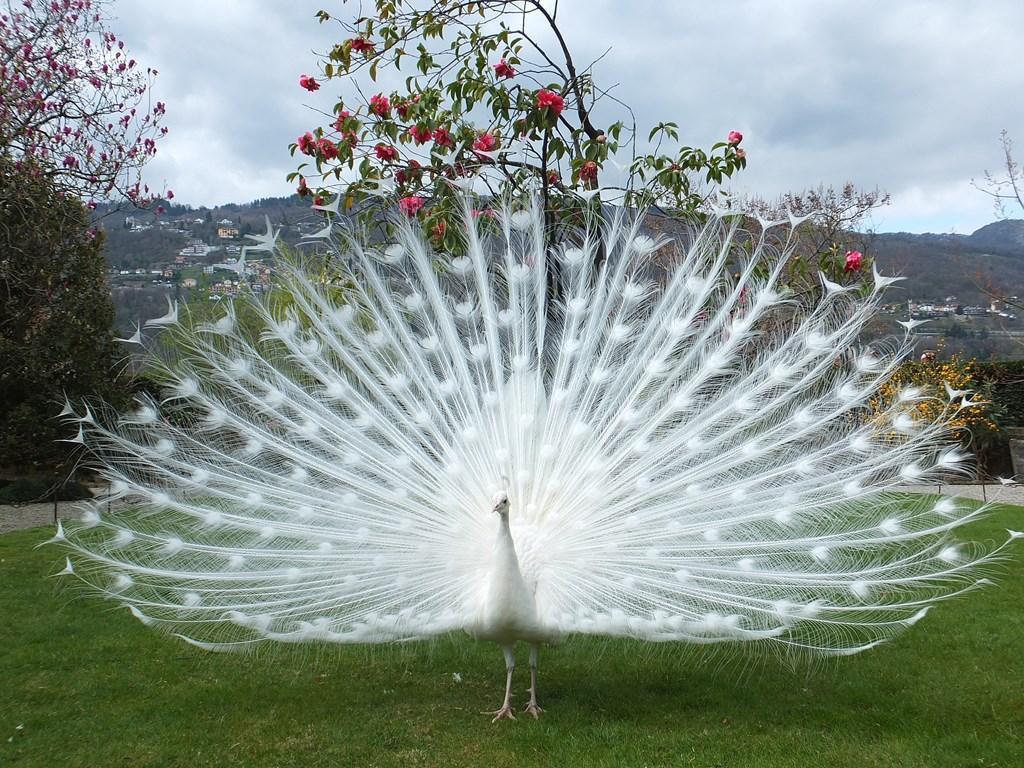
The white peacock is an impressive variant of the species, standing out even without the use of vibrant colors.
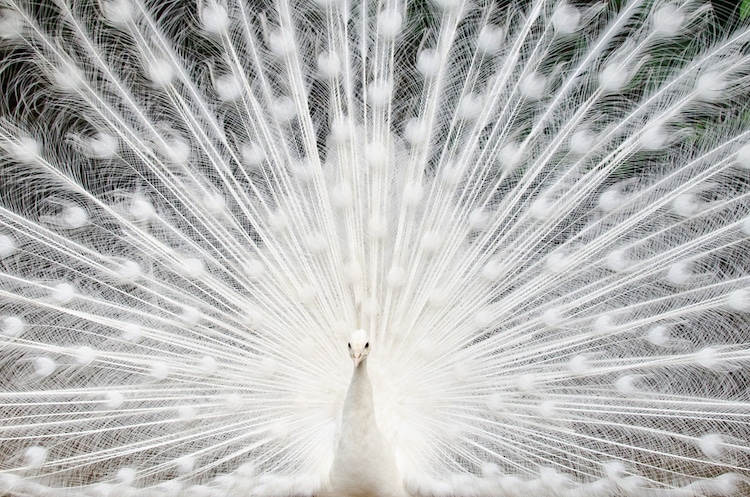
Particularly the male birds have a trail comprising approximately 150 feathers that grow completely in two years. This implies that their feathers will shine under the sunlight while they endeavor to woo a female mate.
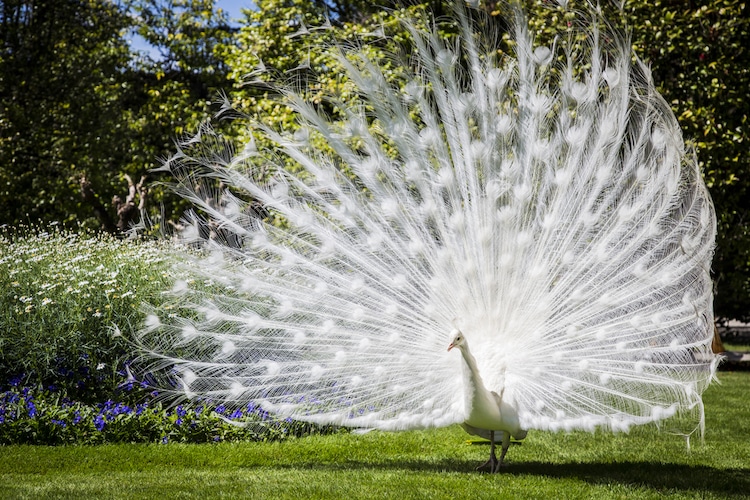
These stunning feathered creatures are just like regular peacocks, but their unique feature is the absence of pigmentation that provides their vibrant hues.
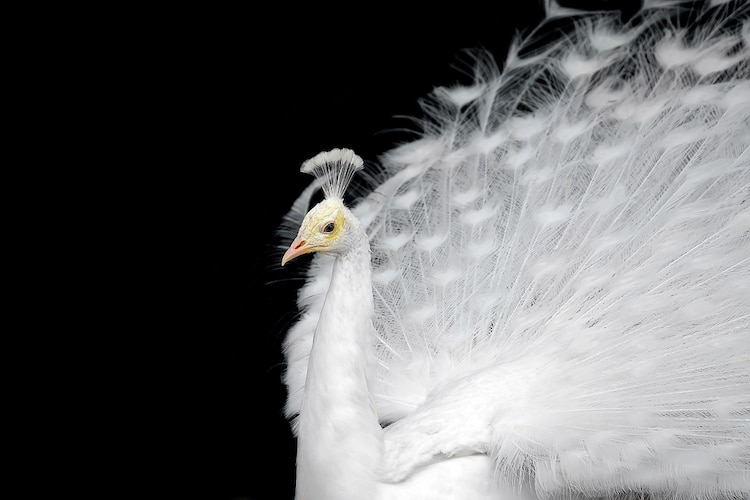
The reason behind the unusual appearance of this animal is due to a genetic mutation referred to as leucism. This condition is comparable to albinism, but the eyes retain their color, making it less extreme.
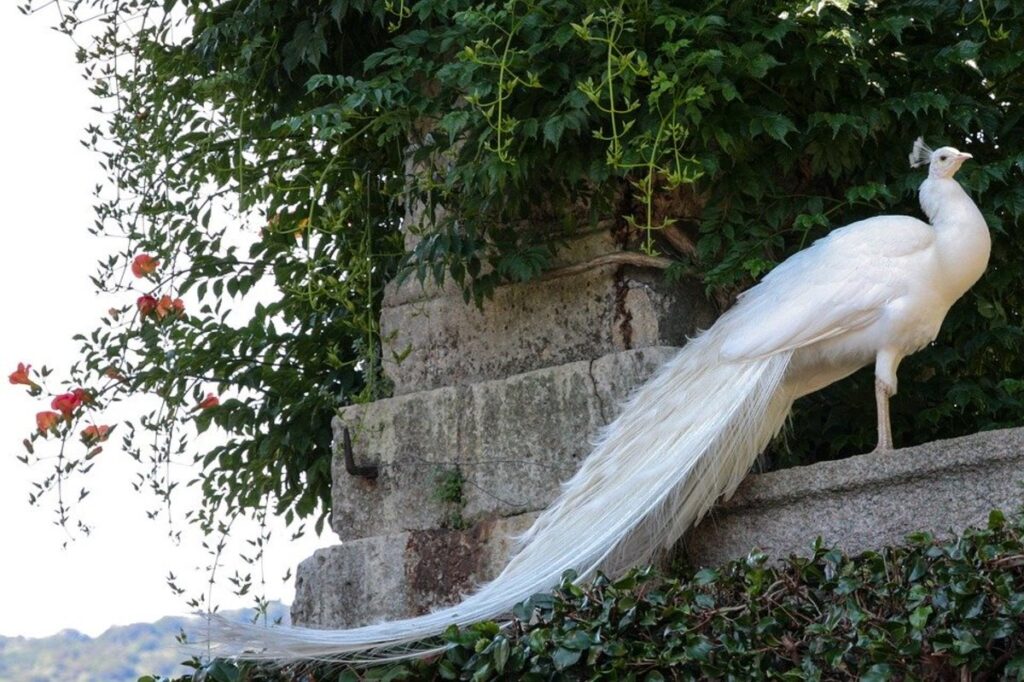
Many cultures hold the species in high regard due to their distinct appearance.
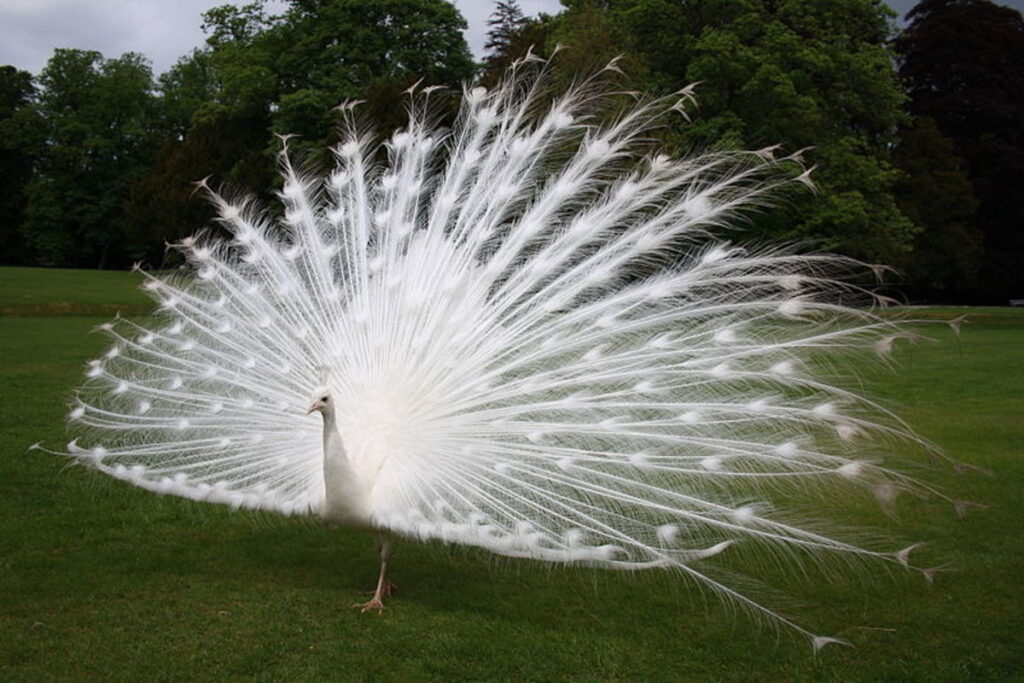
Encountering a white full-grown peacock in its natural habitat is an extraordinary occurrence, which is why they are now being raised in captivity.
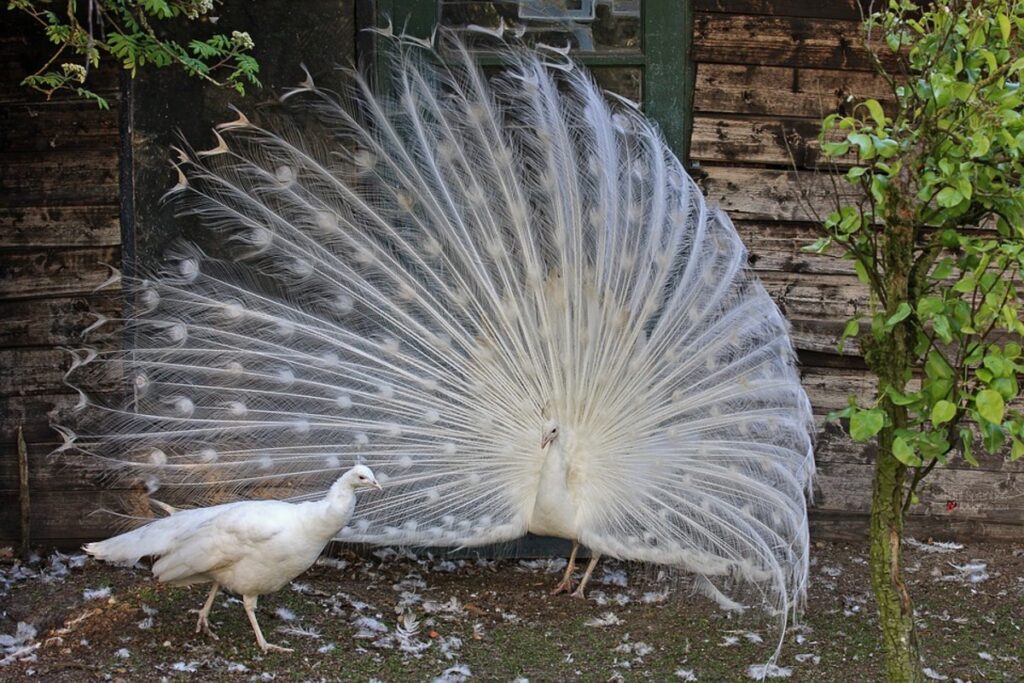
The white peacock holds varied meanings in different cultures. It can represent purity, eternal love, and everlasting life.
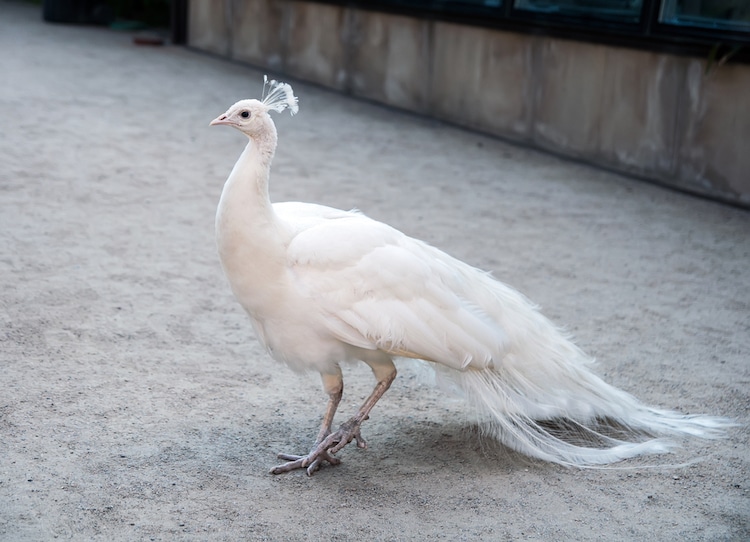
It’s unlikely for the white peacock to thrive in its natural habitat due to the negative impact of their white color on their camouflage.
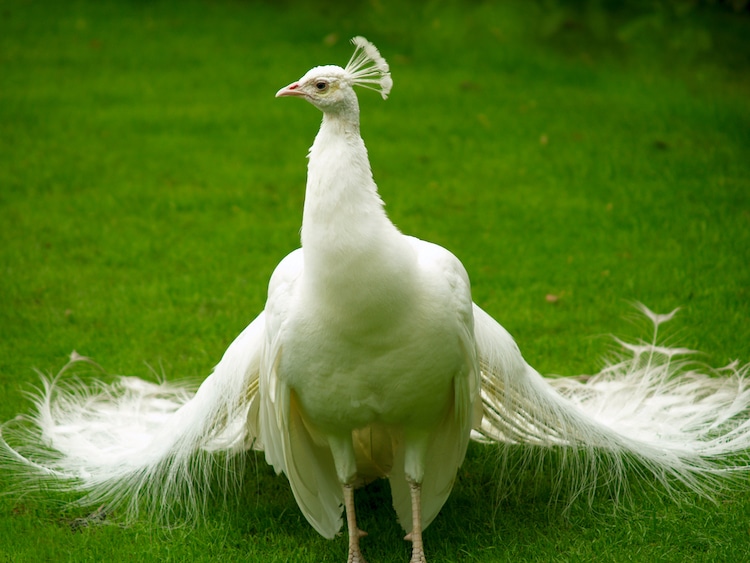
Certainly, it’s important to differentiate the appropriate term for peafowl, specifically when referring to male ones. However, for the sake of simplicity, it’s often easier to use the more familiar term of “peacock.”
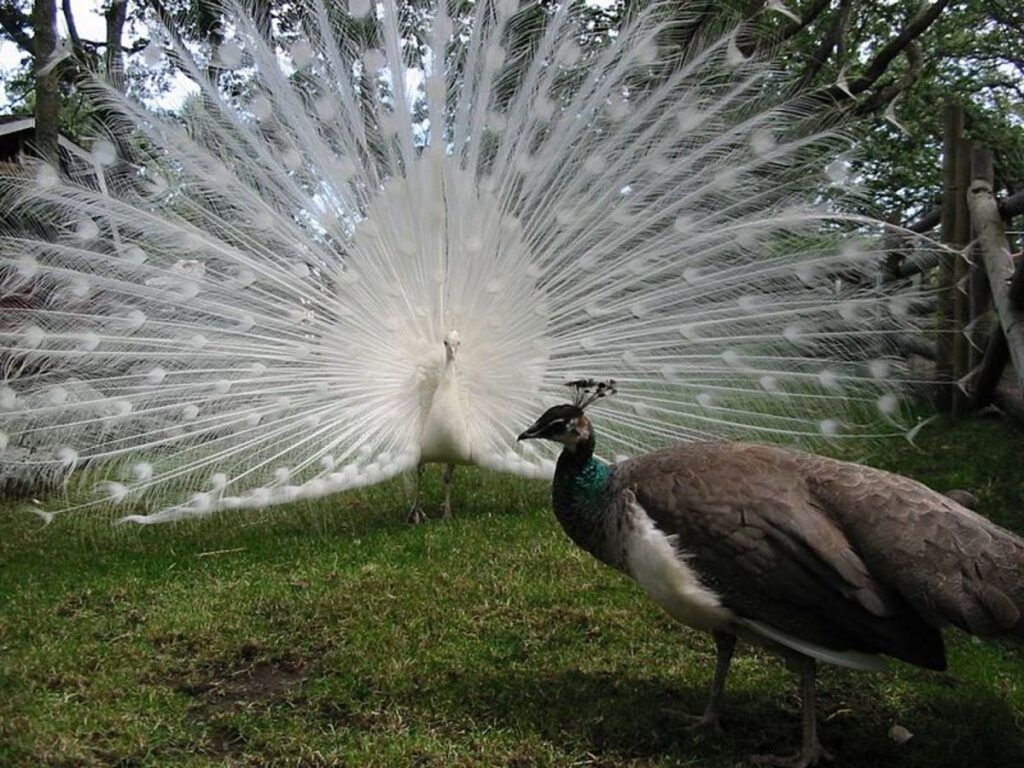
Back in medieval times, these feathered creatures were considered a prized delicacy and served on fancy plates for important guests. However, recent reports indicate that the meat might not have been as tender as expected.

